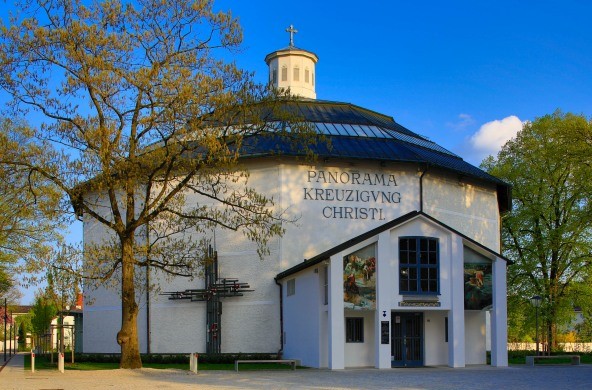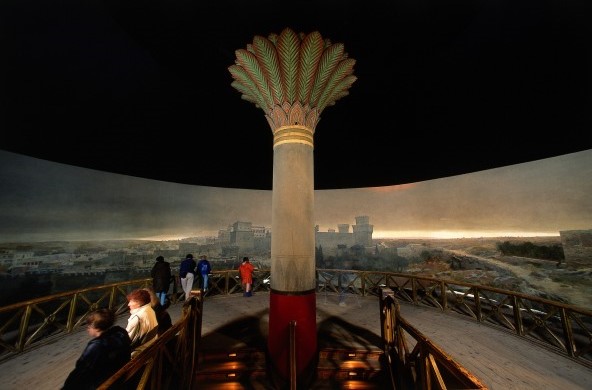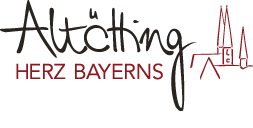Just a few steps from Chapel Square (Kapellplatz), the Jerusalem Panorama Crucifixion of Christ welcomes visitors to a time journey of the special kind. From the outside, the rotunda looks more like a church. However, the moment you enter the building, walk along the dark narrow corridor and up the wooden stairs to the platform, you will have a unique experience. The 360° Panorama Altötting will captivate you and take you to ancient Jerusalem and the dramatic events taking place there around the year 30 A.D. A descriptive and impressive audio tour will make the illusion perfect.

The Panorama Altötting

An Unusual Art Form
"All-embracing perspective" - the translation of the word "panorama" - describes this art form very well. The Panorama Altötting is a synthesis of the arts, comprising the circular architecture of the building, the painting of the picture as well as the stage design behind the scenery. Daylight is only used for the Panorama Altötting, which is dimmed at the ceiling and directed towards the canvas. This creates a perfect illusion for visitors and makes them feel like being in the picture themselves. As the Panorama Altötting is the only remaining historical panorama in Germany, it is under monument protection by the Free State of Bavaria and is also a UNESCO cultural heritage site.

Gebhard Fugel, the Creator of the Panorama
The creator of the Panorama Altötting Gebhard Fugel and his artistic team realised the Panorama in 1902 and 1903. The picture is painted in oil on canvas. The canvas of the Panorama Altötting is a staggering 12 metres in height and 95 metres in circumference and consists of 27 individually joined panels of cloth. The Panorama Altötting is a huge circular painting on 1,200 m² of canvas. The Jerusalem Panorama Crucifixion of Christ in Altötting is considered to be the most important work by Gebhard Fugel.
Opening hours
Closed from 19.12.2022 to 09.03.2023
Special openings for groups of 10 people or more can be booked on request at info@panorama-altoetting.de
Prices
Adults: 4,50 €
Pupils 7 – 18 Jahre: 2,00 €
Pupils in school classes: 1,00 €
Parents with children till the age of 18: 7,00 €
Groups with more than 10 people: 3,50 € per person
Contact
Jerusalem Panorama Kreuzigung Christi
Gebhard-Fugel-Weg 2
84503 Altötting
Telefon: +49 (0)8671 6934
E-Mail: info (at) panorama-altoetting.de
